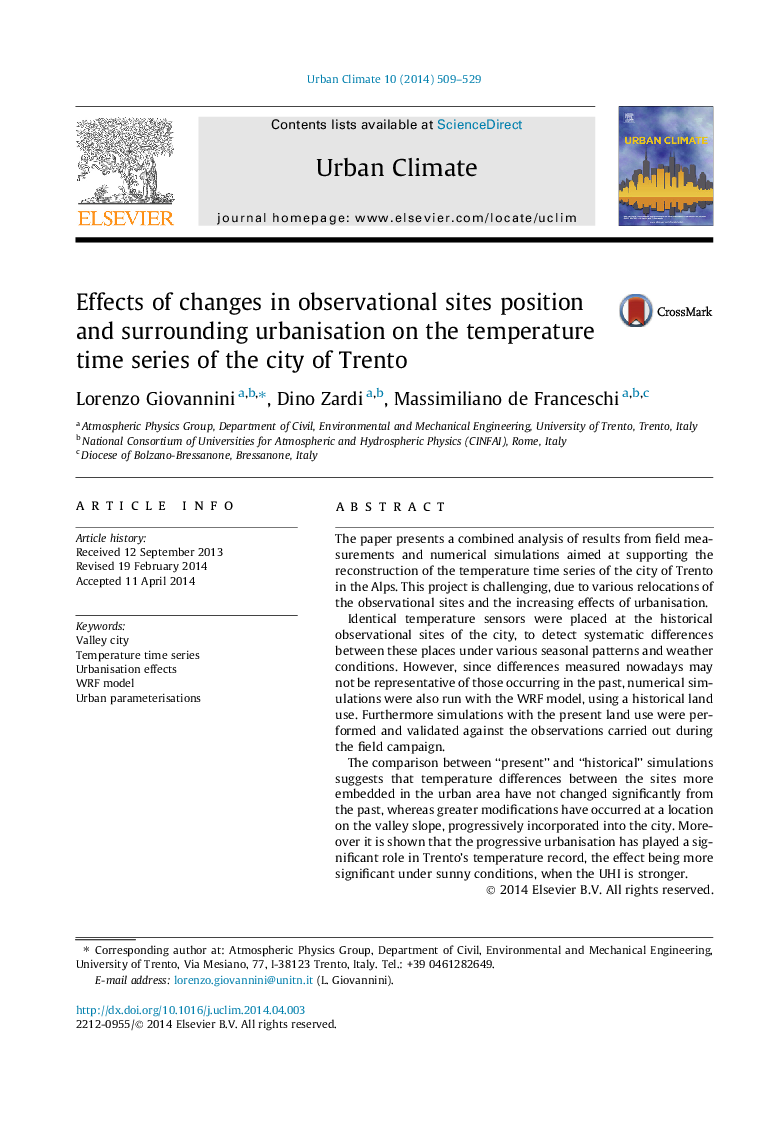| کد مقاله | کد نشریه | سال انتشار | مقاله انگلیسی | نسخه تمام متن |
|---|---|---|---|---|
| 143744 | 163470 | 2014 | 21 صفحه PDF | دانلود رایگان |
• Effects of observational sites changes and urbanisation on an urban temperature time series.
• Analysis of results from a specifically-designed field campaign and from simulations with WRF.
• High-resolution urbanised WRF simulations.
• High-resolution input gridded datasets of urban morphology and anthropogenic heat releases.
• Significant effects of urbanisation in the last century.
The paper presents a combined analysis of results from field measurements and numerical simulations aimed at supporting the reconstruction of the temperature time series of the city of Trento in the Alps. This project is challenging, due to various relocations of the observational sites and the increasing effects of urbanisation.Identical temperature sensors were placed at the historical observational sites of the city, to detect systematic differences between these places under various seasonal patterns and weather conditions. However, since differences measured nowadays may not be representative of those occurring in the past, numerical simulations were also run with the WRF model, using a historical land use. Furthermore simulations with the present land use were performed and validated against the observations carried out during the field campaign.The comparison between “present” and “historical” simulations suggests that temperature differences between the sites more embedded in the urban area have not changed significantly from the past, whereas greater modifications have occurred at a location on the valley slope, progressively incorporated into the city. Moreover it is shown that the progressive urbanisation has played a significant role in Trento’s temperature record, the effect being more significant under sunny conditions, when the UHI is stronger.
Journal: Urban Climate - Volume 10, Part 3, December 2014, Pages 509–529
